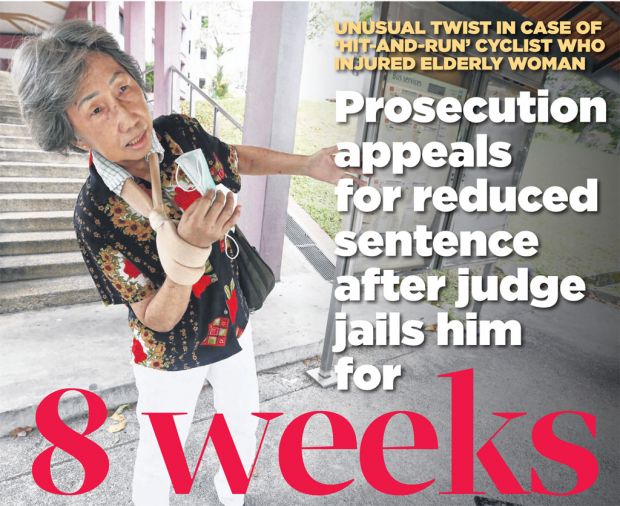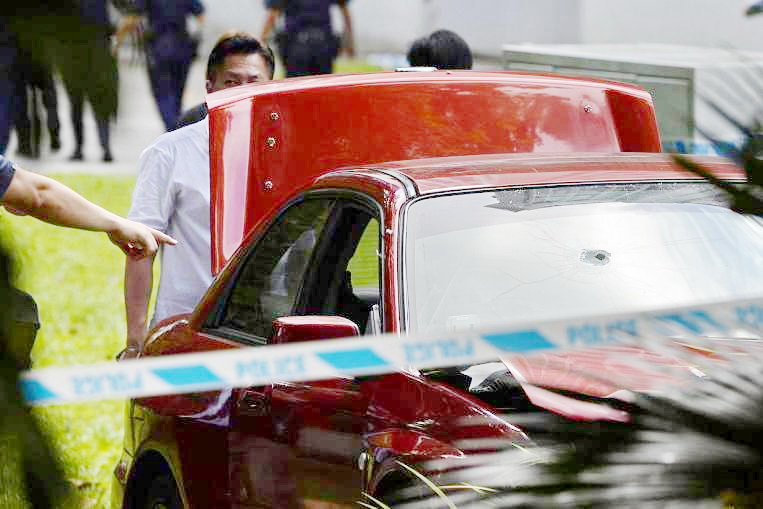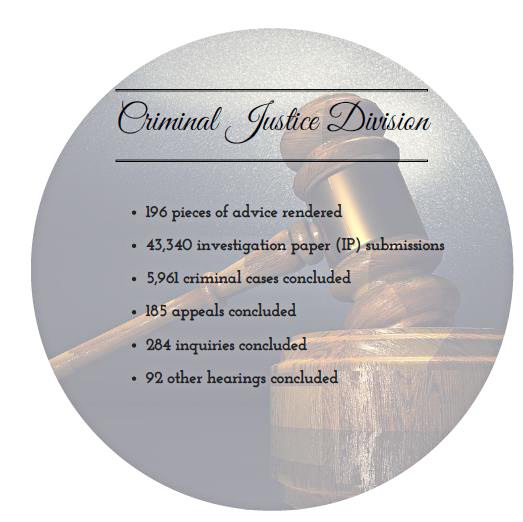Criminal Justice Division
The Criminal Justice Division (“CJD”) is responsible for all prosecutions except those relating to financial and technology offences, which come under the purview of the Financial and Technology Crime Division. The Division also renders advice on criminal justice matters to Government departments and agencies, supervises ministry prosecutions and is actively involved in law reform relating to criminal matters.
HIGHLIGHTS OF WORK DONE IN 2015
(1) Major Cases
- Public Prosecutor v Lim Choon Teck [2015] SGHC 265
- Public Prosecutor v Chong Hou En [2015] SGHC 69
- GAJ v Public Prosecutor [2015] SGHC 134 The accused was a teacher at a local junior college who had engaged in sexual activity with a 14-year-old minor he met online. On appeal, the accused was sentenced to a cumulative term of 12 months’ imprisonment. The High Court held that the vulnerability of the minor and the degree to which he had been exploited by the accused serve as the paramount sentencing considerations for such offences.
- Winston Lee Siew Boon v Public Prosecutor [2015] SGHC 186 The accused, a doctor, was convicted after trial for outraging the modesty of his female patient. On appeal, the accused argued that the judge presiding over the trial had erred in not ordering the Prosecution to disclose the complainant’s police statements pursuant to the principles set out in the case of Muhammad Bin Kadar and another v Public Prosecutor [2011] SGCA 32. The High Court rejected this argument. In doing so, it made important pronouncements on the procedure to be adopted when future applications to compel the Prosecution to disclose material are made. By way of a Criminal Motion, the accused then applied for leave to refer questions of law to the Court of Appeal pursuant to section 397(1) of the Criminal Penal Code. The criminal motion was dismissed.
- Lim Bee Ngan Karen v Public Prosecutor [2015] SGHC 183
- Public Prosecutor v Rosman Bin Anwar and another appeal [2015] SGHC 247
- Muhammad Ridzuan bin Mohd Ali v Attorney-General [2015] SGCA 53 The applicant had been convicted on two charges of trafficking in diamorphine, one of which involved 72.05g of the drug. The Public Prosecutor decided against issuing him with a certificate of substantive assistance, and the applicant was sentenced to death. The applicant sought leave to commence judicial review proceedings against the Public Prosecutor’s decision. The High Court refused to grant the leave, and the Court of Appeal dismissed the applicant’s subsequent appeal. In doing so, the Court of Appeal made important observations concerning judicial review of decisions of this nature made by the Public Prosecutor. This included observations on issues relating to the burden of proof, equal treatment under the law, and bad faith.
- Public Prosecutor v Koh Wen Jie Boaz [2015] SGHC 277
- Mohd. Fauzi Bin Mohamed Mydin v Public Prosecutor [2015] SGHC 313
- Wham Kwok Han Jolovan v Attorney-General [2015] SGHC 324
This marked the first time in Singapore’s legal history where the Prosecution appealed against a sentence on the ground that it was manifestly excessive. The accused unlawfully rode a bicycle within a bus stop at an unsafe speed and collided with a 69-year-old woman, causing her to fall and fracture her arm and wrist. The accused had been sentenced by the District Court to eight weeks’ imprisonment. On appeal, the High Court agreed with the Prosecution that the sentence was manifestly excessive, and reduced it to three weeks’ imprisonment. The Prosecution explained in a media statement that it “is a crucial aspect of the Public Prosecutor’s role in protecting the public interest – to secure a fair, proportionate sentence that is neither manifestly inadequate nor manifestly excessive.”
See Public Prosecutor v Lim Choon Teck [2015] SGHC 265at http://bit.ly/1M1ZbMN (accessed 7 March 2016).

(above) Media report concerning PP v Lim Choon Teck (Source: The New Paper)
The accused faced charges for secretly filming upskirt videos and videos of people naked in the shower, and for possessing obscene films. The District Court sentenced the accused to probation on the ground that he suffered from voyeurism and fetishism. On appeal, the Prosecution led expert evidence to show that persons suffering from these conditions retained the capacity to exercise self-control over their actions. The High Court accepted this evidence, and sentenced the accused to a total of 16 weeks’ imprisonment.
See Public Prosecutor v Chong Hou En [2015] SGHC 69 at http://bit.ly/1QAJUIh (accessed 7 March 2016).
See GAJ v PP [2015] SGHC 134 at http://bit.ly/1QAJUIh (accessed 7 March 2016).
See Winston Lee Siew Boon v Public Prosecutor [2015] SGHC 186 at http://bit.ly/21Uckki (accessed 7 March 2016) and Lee Siew Boon Winston v Public Prosecutor [2015] SGCA 67 at http://bit.ly/1QR1tTg (accessed 14 March 2016).
The accused was convicted and sentenced for having committed various illegal 4-D and soccer betting offences. Separately, the accused’s brother and an acquaintance, who committed similar offences, had received lower sentences for their individual charges. On appeal, the High Court held that the principle of parity in sentencing applied across all three individuals as they were involved in a common criminal enterprise, and this was although they did not all commit the self-same crime. The accused’s sentence was reduced accordingly.
See Lim Bee Ngan Karen v Public Prosecutor [2015] SGHC 183 at http://bit.ly/1R246VJ (accessed 7 March 2016).
The accused persons, who are husband and wife, had been convicted on charges of voluntarily causing hurt to their domestic maid. They were sentenced to a total of two weeks’ imprisonment and four weeks’ imprisonment respectively.
The Prosecution appealed on the ground that the sentences were manifestly inadequate. The High Court agreed with the Prosecution, but noted that the wife had completed serving her sentence by the time of the appeal and that this justified some discount to the final sentencing equation. The wife was subsequently sentenced to eight weeks’ imprisonment in total, and the husband to six weeks’ imprisonment in total.
See Public Prosecutor v Rosman Bin Anwar and another appeal [2015] SGHC 247 at http://bit.ly/1nqjvBe (accessed 7 March 2016).
See Muhammad Ridzuan bin Mohd Ali v AG [2015] SGCA 53 at http://bit.ly/21QZ9E7 (accessed 7 March 2016).
The accused, an 18-year-old male, had vandalized the top of a block of Housing Development Board flats with expletives directed at a local political party. Although he had committed this offence whilst on probation, a District Judge sentenced the accused to another term of probation as he had displayed signs of a positive turnaround in the days leading up to the sentencing. On appeal, the High Court agreed with the Prosecution that the sentence of probation was manifestly inadequate and sentenced the accused to reformative training. The Court took the view that re-offending while on probation was a very relevant consideration, and that the accused might have been incentivised to put up a favourable front prior to his sentencing.
See Public Prosecutor v Koh Wen Jie Boaz [2015] SGHC 277 at http://bit.ly/1SsXZsx (accessed 7 March 2016).
The accused was sentenced to the mandatory minimum sentence provided by law for an offence of drug consumption. Notwithstanding this, the accused appealed on the ground that the sentence was manifestly excessive. The High Court dismissed the appeal, and also expressed the view that the Courts can and should consider summary rejection of similar appeals in future, as provided for under the Criminal Procedure Code (Cap 68, 2012 Rev Ed).
See Mohd. Fauzi bin Mohamed Mydin v Public Prosecutor [2015] SGHC 313 at http://bit.ly/1L9Gkoc (accessed 7 March 2016).
The applicant was issued a warning to refrain from conduct amounting to an offence under the Public Order (Unrestricted Area) Order 2013 (S 30/2013), which pertained to the organising of a candlelight vigil at Hong Lim Park. He sought leave to commence judicial review proceedings to quash this warning.
The High Court refused to grant leave, and took the view that a warning is no more than an expression of the opinion of the relevant authority that the recipient has committed an offence. It does not bind the recipient, and does not and cannot amount to a legally binding pronouncement of guilt or finding of fact.
See Wham Kwok Han Jolovan v Attorney-General [2015] SGHC 324 at http://bit.ly/1OX7gm3 (accessed 7 March 2016).

(above) Shangri-La Shooting: Inquiry into the Death of Mohamad Taufik bin Zahar (Source: The Straits Times)
(2) Major Inquiry: Coroner’s Inquiry into the Death of Mohamad Taufik bin Zahar
From 29 to 31 May 2015, the Shangri-La Hotel was the venue for the 14th Asian Security Summit. The Police conducted a series of road blocks and security checks at and around this venue as part of a high level of security adopted for this event.
On 31 May 2015 at about 4.17 am, the deceased drove and crashed his car through concrete barriers set up for this event. As there was no indication of the car stopping despite repeated warnings, police officers opened fire at the car, killing the deceased.
A Coroner’s Inquiry was convened to inquire into the circumstances leading to the deceased’s death, which is on-going. The opening statement made by the Attorney-General’s Chambers in this case can be found at http://bit.ly/21QZsyO (accessed 7 March 2016).
(3) Key Initiative: Completion of the Sentencing Module
The principle of equal justice, which includes the general objective of consistency in sentencing, is critical to maintaining public confidence in the administration of justice. To that end, the Division has in the past year compiled a Sentencing Module bringing together the leading cases on sentencing spanning 45 provisions of the Penal Code (Cap 224, 2008 Rev Ed), as well as 26 other statutes containing penal provisions. This Module covers decisions made from 2012 to date, and is designed to complement existing works and publications on cases decided before that year. With this Module, officers of the Division now have quick and easy access to sentencing precedents with which to assist the courts.

(above) Sentencing materials available to officers of the CJD
Key Figures for Calendar Year 2015
 *IPs may be submitted to AGC more than once. **Inquiries include disposal inquiries, committees of inquiry and preliminary inquiries (now known as committal hearings).
*IPs may be submitted to AGC more than once. **Inquiries include disposal inquiries, committees of inquiry and preliminary inquiries (now known as committal hearings).
***Other hearings include criminal motions, criminal revisions, criminal references and originating summonses.
